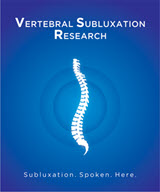New Chiropractic Research on Sheds Light on Skull Deformity in Infants

Deformational plagiocephaly is when a baby develops a lasting flat spot on one side the head or the back of the head. There can be many causes including birth trauma such as in this case. It can also happen when a baby sleeps in the same position most of the time or because of problems with the neck muscles. This condition is also called flat head syndrome.
When a baby’s head stays in one position for long periods of time, the skull flattens. Sometimes a baby is born with this flattening because of a tight space in the uterus. This might happen if there is more than one baby. Muscular torticollis, which was also seen in the case reported on in this study can also cause deformational plagiocephaly. Muscular torticollis is a problem where one or more of the neck muscles is very tight. This tightness keeps the baby’s head in the same position.
“It makes a lot of sense when you think about it” stated Dr. Matthew McCoy, a researcher, public health expert and editor of the journal that published the study. “Chiropractors work with the alignment and movement of the bones that make up the spine and because of the relationship between the spine, nerves and muscles they can effect the head. So it is not so surprising that you would see this type of outcome.”
The scientific literature shows numerous studies reporting positive changes or resolution of plagiocephaly in infants while they were under regular chiropractic care using a variety of chiropractic techniques. Most reported assessment and correction specifically of vertebral subluxation.
Spinal distortions, termed subluxations by chiropractors, result in structural and neurological interference to the spine and nerve system and chiropractors correct or reduce this interference through gentle and specific adjustments.
The three 2.5 month-old infants in this study had all been experiencing plagiocephaly. Each of their heads were flat which concerned their parents so they sought care. One infant had noticeably uneven head growth. The second infant had a flat head in addition to obvious muscle imbalance, restricting motion. The last infant had failure to thrive, muscle imbalance, vomiting, and inability to latch to breast feed.
The chiropractor evaluated each of them to determine the degree of plagiocephaly. During each examination, areas of tight muscles, altered posture, and structural shifts were noted. These structural shifts can lead to obstruction of the nerves and it is this obstruction, called vertebral subluxations, that chiropractors correct.
Following chiropractic adjustments, each infant improved and symptoms subsided.
The study’s author called for additional research to investigate the clinical implications of chiropractic in this population.
Contact Information:
Matthew McCoy DC, MPH
Journal of Pediatric, Maternal & Family Health – Chiropractic
http://www.chiropracticpediatricresearch.com
support@vertebralsubluxationresearch.com

Blogs
- The Chiropractic Cartel: A Look Back at Bias in Accreditation and its Imact on Today's Profession
- Inside Montana's Chiropractic Monopoly: ACA & MCA's Brazen Board Takeover
- Concerns Grow About Control of the NY State Chiropractic Board by the ACA - Use of X-ray in NY Under Threat
- Reproductive Health Information and Chiropractic Care: Navigating New Privacy Regulations
- Navigating Substance Use Disorder (SUD) Consent: What Chiropractors Need to Know













